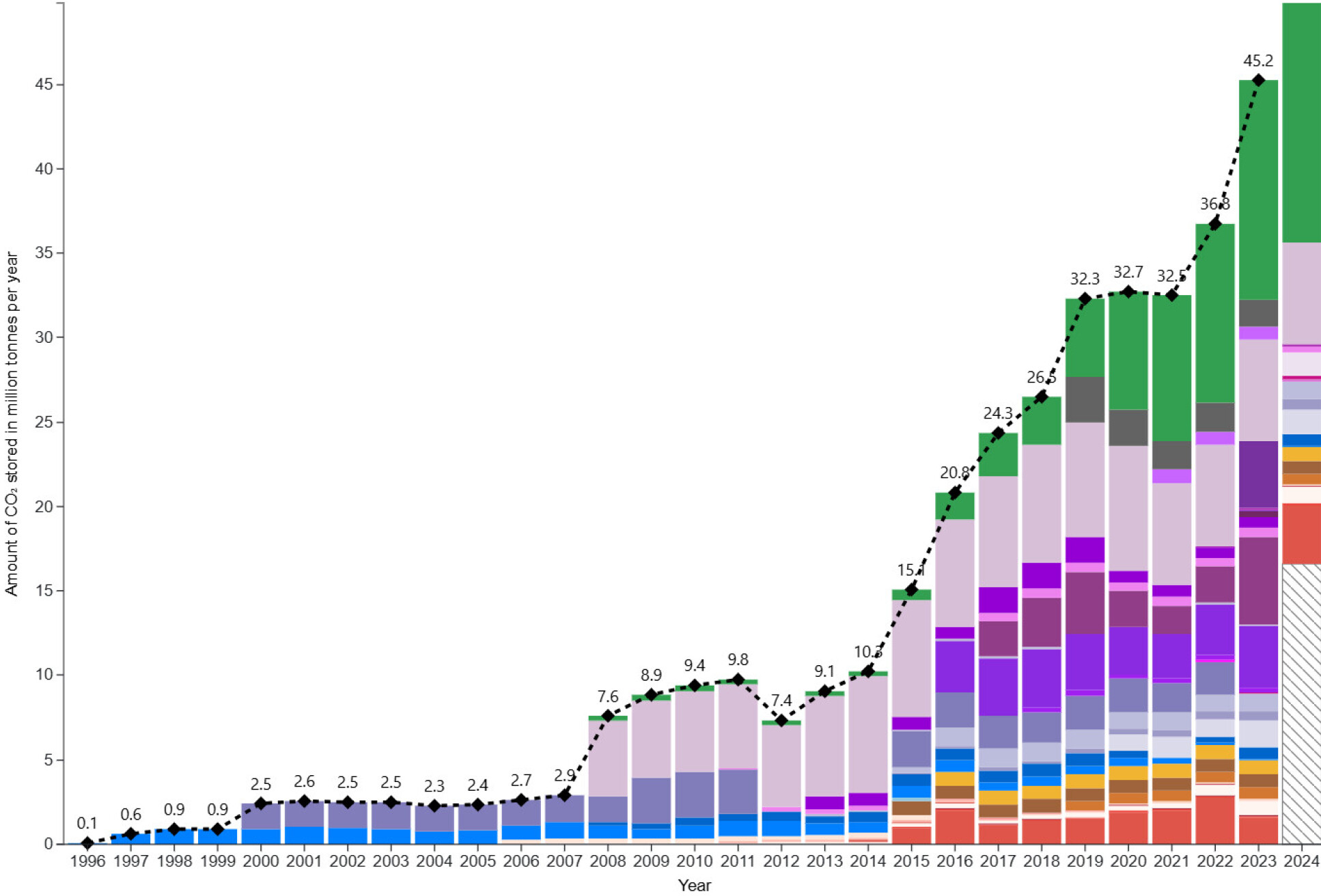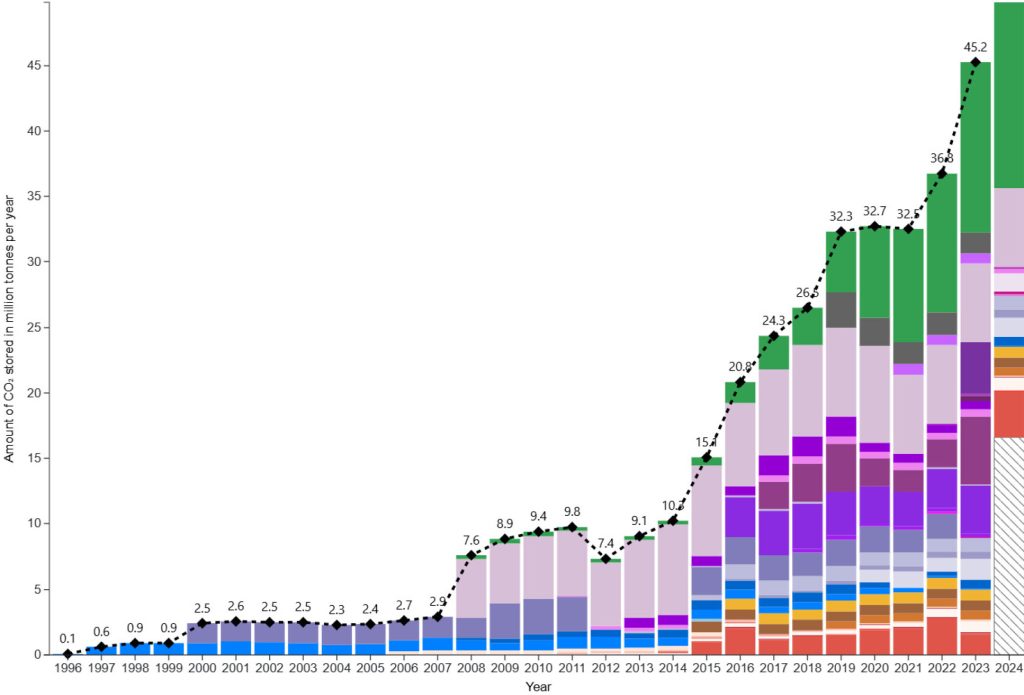This mass underground storage has mostly come about thanks to projects in the United States, China, Brazil, Australia and the Middle East, with continued growth projected in 2024-5.
The researchers behind the report say it provides unequivocal evidence that the technology is an essential tool, operating at the scale needed to tackle climate change. They say it shows that CCS isn’t a concept for the future, but a proven, scalable technology operating effectively today.
Led by Imperial College London academics, the consortium1 of scientists and industrial partners includes experts from around the world at the Department of Energy Science & Engineering at Stanford, MIT Civil and Environmental Engineering, Global CCS Institute, Carbon Capture & Storage Association, IEAGHG and CSIRO, Australia’s national science agency.
“The central message from our report is that CCS works, demonstrating a proven capability and accelerating momentum for geologic storage of CO2,” said Professor Samuel Krevor, Director of the Register from the Department of Earth Science and Engineering (ESE) at Imperial College London.
“We have found that industrial-scale carbon management is already a reality and can safely sequester CO2 deep underground. This will be a key strategy – alongside vital efforts to cut emissions – for decarbonising hard-to-abate industries and cutting the total CO2 in the atmosphere.” Professor Krevor holds a Senior Research Fellowship jointly funded by Shell and the UK’s Royal Academy of Engineering.
The report’s authors say the policies underpinning the growth to date are being strengthened in places like the US and Europe. Continued or even increased growth is therefore expected over the coming decade.
“As more projects come online, costs will inevitably reduce, as already seen with other decarbonisation technologies. Industry will become more efficient with experience, and capture, transport and storage technologies will continue to develop,” said Professor Krevor.

The London Register of Subsurface CO2 Storage
The London Register of Subsurface CO2 Storage is an initiative that has been set up to track the progress of CCS, starting with a single pioneering project in Norway in 1996 to what is now a global enterprise.
The Register’s 2025 Annual Report tracked the annual rates of CO2 stored underground from operational projects worldwide from 1996 to 2024. It compiled public information (such as government databases on greenhouse gas reporting) and surveyed project operators in a co-ordinated effort to establish the first and most comprehensive record of CCS growth and maturation to date.
While the views on CCS are polarised among the climate science community (it is considered by some as a distraction from reducing carbon emissions, or not well developed and proven possible to rollout at sufficient scale), plans for CCS nevertheless underpin many national, international and corporate decarbonisation plans.
The new report finds that large-scale projects launched in the last decade, in the US, China, Brazil, Australia and the Middle East, have driven the average annual growth rate of CCS to 9.2%, and a record 45.2 million tonnes were safely stored in 2023, marking a significant increase of 8.4 million tonnes from the previous year.
Projects that are leading the charge include the Seminole San Andres Unit in the US and the Santos Basin Pre-Salt oilfield in Brazil, which injected 3.9 million tonnes and 13.0 million tonnes, respectively, in 2023, accounting for more than a third of all storage that year.
Although the report noted that 2024 data is still incomplete, early indications suggest continued growth, particularly in Brazil and China. Meanwhile, different nations with different geologies and industrial bases have also been able to successfully deploy CCS locally, confirming not only its feasibility but also its versatility.
Professor Krevor added: “Storage rates like these are comparable to the emissions mitigated by other renewable and decarbonisation technologies. For example, the total stored in 2023 alone amounts to the emissions avoided by all the renewable energy produced in Australia or Italy, or two thirds of the renewable energy produced by the UK, in the same year.”
Limiting global warming
From the data the report also identified three distinct phases of growth over the past two decades or so, starting with the Pioneering Phase (1996–2007), which first proved the technical feasibility of geological storage. This was followed by the North American Expansion (2008–2015), where the number of projects grew to demonstrate that injection worked on a larger scale, and finally to Global Scaling (2016–2023), in which CCS has become truly international.
Today, deployment of CCS projects across the globe is at an unprecedented high, and the number of new projects is growing.
“When one project can sequester millions of tonnes of CO2 annually, it brings us a significant step forward in reducing global emissions,” said Dr Xiaowei Gao, Executive Director of the Register from the Department of Earth Science and Engineering at Imperial.
However, to keep global warming below the 1.5°C pledged by the Paris Agreement, all reasonable projections suggest that the technology must scale-up to one billion tonnes (gigatonne) of CO2 storage or more per year by 2050. Across the scientific community, it is agreed that the primary objective should be cutting emissions, and the researchers say this report shows it can go hand in hand with CCS.
“What we are seeing in this data is that CCS project development is achieving lift-off around the world and is putting us on the track to achieve these large scales of deployment within the required timescales,” said Professor Krevor.
“This depends on the maintenance and expansion of policies that enable CCS deployment; the consistent performance and expansion of these major sites around the world should provide the confidence needed for policymakers and investors to support the next wave of CCS development and for industry growth to continue.”
Collaborating for net-zero
The London Register brought together a consortium of leading international experts from academia, industry and government, partnering with professors at institutions including Energy Science & Engineering at Stanford University, Civil and Environmental Engineering at MIT, Global CCS Institute, Carbon Capture & Storage Association, IEAGHG and CSIRO.
The Register highlights how collaboration between academia, industry and government is accelerating the safe, large-scale deployment of CO2 storage – a key enabler for industrial decarbonisation and energy security.
Its international nature also reflects Europe’s growing role in CCS, emerging as a key region for project deployment and future reporting for the Register, and complementing currently active regions like the US.
“We hope that these findings will provide visibility to the very hopeful message that we have the technologies needed to solve climate change, that large scale CO2 storage is happening today around the world, and that it is well placed to make its contribution to large-scale climate change mitigation,” said Professor Krevor.

